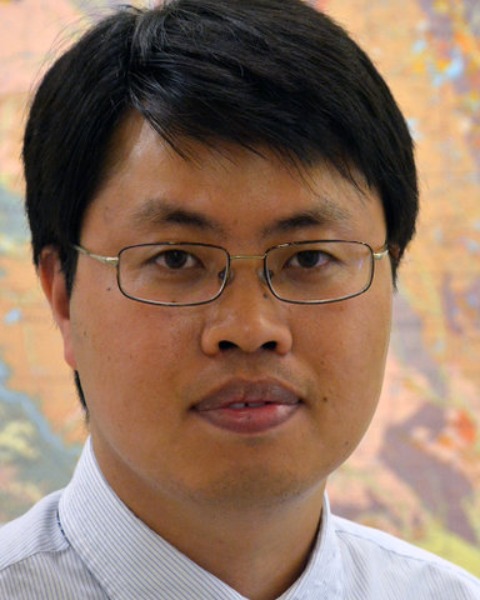Oral
Groundwater
Leveraging Data Assimilation and Deep Learning for Modeling Complex Aquifers
Monday, May 19, 2025
1:15 PM - 1:30 PM Alaska Daylight Time (AKDT)
Room: Room 9 & 10

Liangping Li
Associate professor
South Dakota School of Mines and Technology, United States
Author(s)
Abstract Submission: Groundwater modeling is an important tool for water resources management and aquifer remediation. However, the inherent strong heterogeneity of the subsurface and scarcity of observed data pose major challenges for groundwater flow and contaminant transport modeling. Data assimilation such as the Ensemble Smoother with Multiple Data Assimilation (ES-MDA) can be used to improve the understanding of the subsurface by integrating a variety of data into the modeling. For highly heterogeneous aquifers such as fluvial deposits, traditional data assimilation methods cannot preserve geological structures. This study focused on using an improved GAN, called a progressive growing generative adversarial network (PGGAN), conditioned with hard data to perform parameter estimation of complex facies models by coupling an ensemble smoother with multiple data assimilation (ES-MDA). First, the PGGAN was trained to an image with 128 × 128 resolution. The trained PGGAN was used to generate hydraulic conductivity fields when fed an ensemble of latent variables and hard data. The ES-MDA then was used to update the latent variable with the help of hydraulic head data obtained from the groundwater model. The approach was tested on synthetic hydraulic conductivity data. Results show that this approach was able to perform efficient estimation of an unknown facies model domain. Additionally, the proposed method was applied to a different test case of a facies model exhibiting different statistical characteristics. The results were satisfactory, demonstrating that the method is not constrained to the particular hydraulic conductivity fields introduced in the generator’s training.
Learning Objectives/Expected Outcome (Optional) :
Learning Objectives/Expected Outcome (Optional) :

